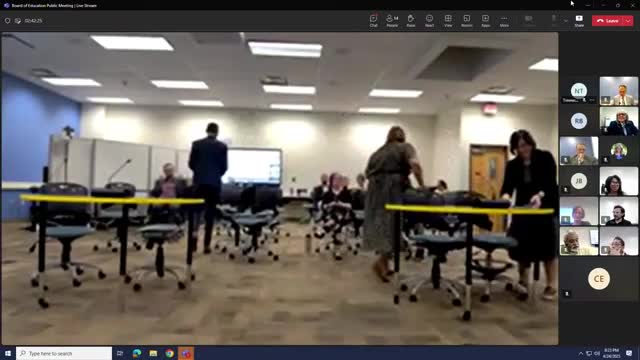Albany E and L Department highlights community partnerships and services for English language learners
April 25, 2025 | ALBANY CITY SCHOOL DISTRICT, School Districts, New York
This article was created by AI summarizing key points discussed. AI makes mistakes, so for full details and context, please refer to the video of the full meeting. Please report any errors so we can fix them. Report an error »

The Albany City School District's recent Board of Education meeting highlighted significant community partnerships aimed at supporting English language learners (ELLs) and their families. The meeting featured presentations from local organizations that play a crucial role in assisting newcomers as they transition into the school system.
Key among the discussions was the collaboration between the district and community organizations such as RISE, Capital District Latinos, and Whitney Young Health. These organizations provide essential services, including health care, educational support, and cultural integration programs. For instance, Vanessa Gonzalez from Whitney Young Health detailed the operation of school-based health clinics that offer free services to students, ensuring they receive necessary vaccinations and health care without financial barriers. This initiative is particularly vital for newcomers who may lack access to traditional health services.
Mickey Jimenez from Capital District Latinos emphasized the importance of culturally responsive support, noting the organization's efforts to provide food assistance and educational resources tailored to the diverse backgrounds of the families they serve. Jimenez highlighted the need for community engagement, stating, "It does take a village," as they work to ensure that children feel welcomed and supported in their new environment.
Daniel Butterworth, executive director of RISE, shared insights into the organization's growth and its commitment to helping newcomer families thrive. RISE offers English language instruction, after-school programs, and case management services, serving hundreds of families annually. Butterworth praised the district's proactive approach in creating the Albany International Academy, which has become a critical resource for ELLs, now comprising about 20% of the district's student population.
The meeting also addressed the increasing enrollment of ELLs, with the district reporting a significant rise in students from Spanish-speaking countries, particularly Venezuela and Ecuador. This demographic shift underscores the need for continued support and resources tailored to the unique challenges faced by these families.
In conclusion, the Albany City School District's commitment to fostering partnerships with local organizations is essential in addressing the needs of its growing ELL population. As the district continues to adapt to these changes, the collaborative efforts of community partners will play a pivotal role in ensuring that all students have the opportunity to succeed and feel at home in their new community.
Key among the discussions was the collaboration between the district and community organizations such as RISE, Capital District Latinos, and Whitney Young Health. These organizations provide essential services, including health care, educational support, and cultural integration programs. For instance, Vanessa Gonzalez from Whitney Young Health detailed the operation of school-based health clinics that offer free services to students, ensuring they receive necessary vaccinations and health care without financial barriers. This initiative is particularly vital for newcomers who may lack access to traditional health services.
Mickey Jimenez from Capital District Latinos emphasized the importance of culturally responsive support, noting the organization's efforts to provide food assistance and educational resources tailored to the diverse backgrounds of the families they serve. Jimenez highlighted the need for community engagement, stating, "It does take a village," as they work to ensure that children feel welcomed and supported in their new environment.
Daniel Butterworth, executive director of RISE, shared insights into the organization's growth and its commitment to helping newcomer families thrive. RISE offers English language instruction, after-school programs, and case management services, serving hundreds of families annually. Butterworth praised the district's proactive approach in creating the Albany International Academy, which has become a critical resource for ELLs, now comprising about 20% of the district's student population.
The meeting also addressed the increasing enrollment of ELLs, with the district reporting a significant rise in students from Spanish-speaking countries, particularly Venezuela and Ecuador. This demographic shift underscores the need for continued support and resources tailored to the unique challenges faced by these families.
In conclusion, the Albany City School District's commitment to fostering partnerships with local organizations is essential in addressing the needs of its growing ELL population. As the district continues to adapt to these changes, the collaborative efforts of community partners will play a pivotal role in ensuring that all students have the opportunity to succeed and feel at home in their new community.
View full meeting
This article is based on a recent meeting—watch the full video and explore the complete transcript for deeper insights into the discussion.
View full meeting
